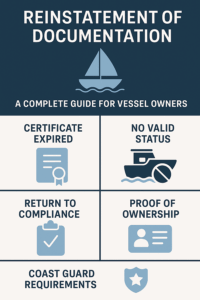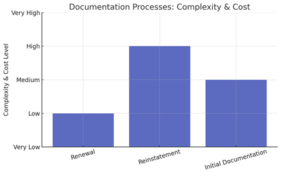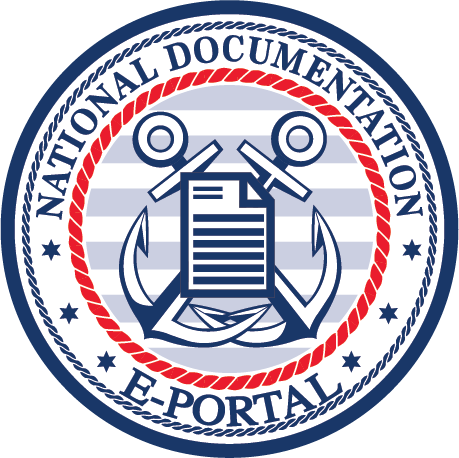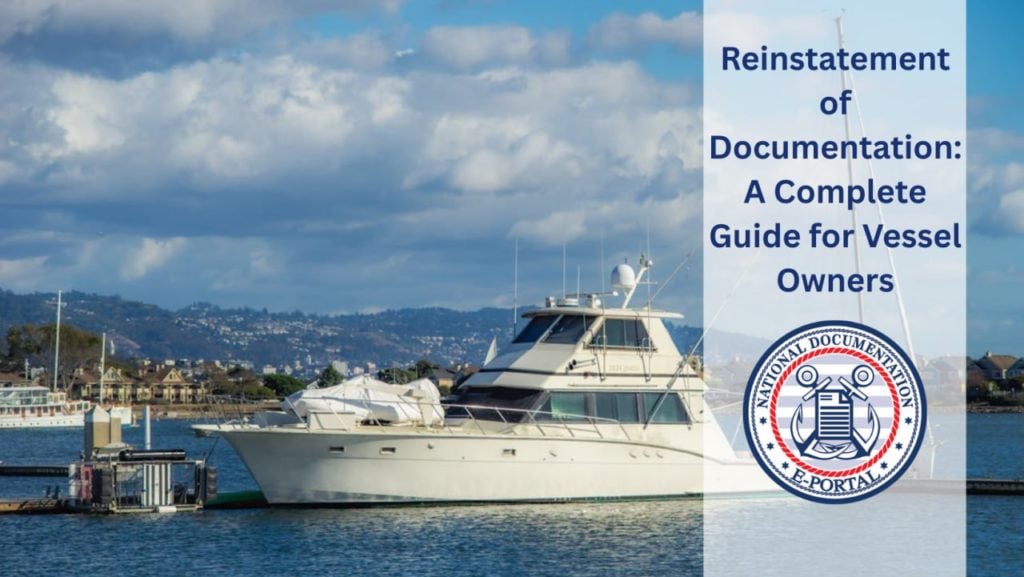When a vessel owner keeps the documentation from being renewed on time, the certificate may be momentarily expired, thus, the vessel will not have a valid status. Therefore, it is necessary to go through the Reinstatement of Documentation procedure to return to compliance and regain the rights of the vessel. This operation is quite essential as it allows vessel owners to keep functioning in a lawful way and at the same time, have the proof of ownership and meet the requirements set by the Coast Guard.
Reinstatement is more than a mere formality—it shields owners from fines, guarantees they are correctly recognized during maritime operations, and ensures the vessel’s registration in the official records. In case the owners have overlooked the renewal, reinstatement is the official way to obtain the certificate of documentation again.

What Is Reinstatement of Documentation and Why It Matters
Reinstatement of Documentation is a procedure by which a certificate that has gone for some time without renewal is made valid again. This usually happens when an owner is not able to renew his certificate before it expires. It is different from a typical renewal in that it requires additional documents to be filed and, in some cases, more money to be paid.
Why It Is Important
- Legal Compliance: The documented vessel must have proper certification to allow it to operate legally in U.S. waters.
- Ownership Proof: Restores ownership records with the NVDC.
- Transaction Readiness Requirement to sell, transfer or finance the vessel.
- Maritime Operations: Allows inspection or international operations without complications.
| Aspect | Renewal | Reinstatement |
|---|---|---|
| Timing | Completed before expiration | After expiration of documentation |
| Cost | Standard renewal fees | May include additional charges |
| Documentation Required | Renewal form and payment | Reinstatement application with extra details |
| Risk | No lapse in documentation | Period of non-compliance until reinstated |
This distinction shows why timely renewal is preferable but highlights the necessity of reinstatement when deadlines are missed.
Legal and Regulatory Framework for Reinstatement
By law, the NVDC of the U.S. Coast Guard oversees the reinstatement of documentation, which has slightly different requirements than documentation renewal.
Filing Requirements
- Vessel’s official number and owner details.
- Reinstatement application form with supporting documentation.
Compliance Obligations
The owners must apply for restoration and have their records updated if there is a change in ownership or a mortgage is filed.
Consequences of Delay
Failure to reinstate documentation in a timely manner may result in:
- Operational restrictions.
- Problems selling and transferring the property.
- Exposure to high compliance costs.
Comparing Reinstatement of Documentation with Related Processes
It is sometimes confused with other vessel documentation filings.

Reinstatement vs. Renewal
- Reinstatement: Usually more difficult after expiration.
- Easier to renew: Must file on time to prevent expiration.
Reinstatement vs. Initial Documentation
- Reinstatement: Applies to vessels with expired documentation.
- Initial Documentation: For new applicants seeking certification.
This indicates that reinstating is complex somewhere between renewing and documenting the original transaction.
Practical Tips for Completing Reinstatement of Documentation
While someone can reinstate easily, someone usually processes straight forward if someone properly prepares for it.
Review Expiration Date
One can check the certificate’s lapse date to learn what is needed for reinstatement.
Prepare Documentation
Obtain ownership details, vessel identification, and any required supporting forms.
File Reinstatement Application
Next, you submit the fees and a reinstatement application to the NVDC.
Confirm Registry Update
You should verify that the NVDC has updated the ship’s status as ‘active’.
Why Reinstatement of Documentation Is Essential
At National Documentation E-Portal, Reinstatement of Documentation is the procedure to re-establish the documents of the owner of a vessel who no longer possess valid documentation. This contrasts with renewal when the certification was legal and has since expired. This is a more involved procedure.

